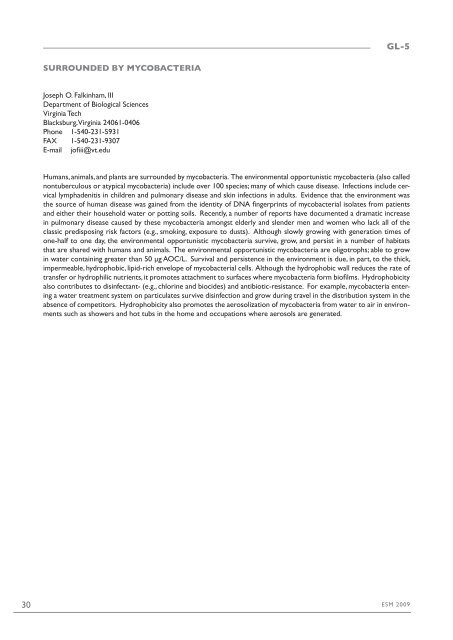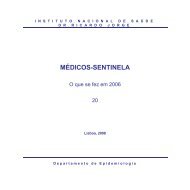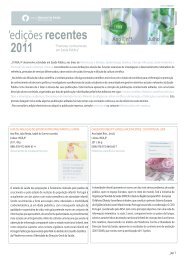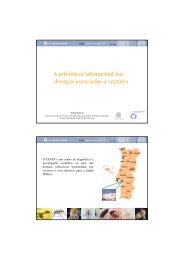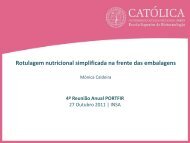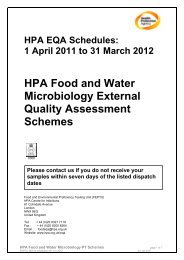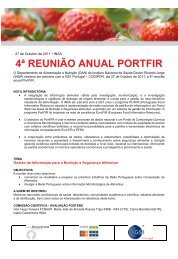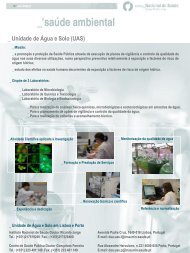European Society of Mycobacteriology - Instituto Nacional de Saúde ...
European Society of Mycobacteriology - Instituto Nacional de Saúde ...
European Society of Mycobacteriology - Instituto Nacional de Saúde ...
You also want an ePaper? Increase the reach of your titles
YUMPU automatically turns print PDFs into web optimized ePapers that Google loves.
GL-5<br />
SURROUNDED BY MYCOBACTERIA<br />
Joseph O. Falkinham, III<br />
Department <strong>of</strong> Biological Sciences<br />
Virginia Tech<br />
Blacksburg, Virginia 24061-0406<br />
Phone 1-540-231-5931<br />
FAX 1-540-231-9307<br />
E-mail j<strong>of</strong>iii@vt.edu<br />
Humans, animals, and plants are surroun<strong>de</strong>d by mycobacteria. The environmental opportunistic mycobacteria (also called<br />
nontuberculous or atypical mycobacteria) inclu<strong>de</strong> over 100 species; many <strong>of</strong> which cause disease. Infections inclu<strong>de</strong> cervical<br />
lympha<strong>de</strong>nitis in children and pulmonary disease and skin infections in adults. Evi<strong>de</strong>nce that the environment was<br />
the source <strong>of</strong> human disease was gained from the i<strong>de</strong>ntity <strong>of</strong> DNA fingerprints <strong>of</strong> mycobacterial isolates from patients<br />
and either their household water or potting soils. Recently, a number <strong>of</strong> reports have documented a dramatic increase<br />
in pulmonary disease caused by these mycobacteria amongst el<strong>de</strong>rly and slen<strong>de</strong>r men and women who lack all <strong>of</strong> the<br />
classic predisposing risk factors (e.g., smoking, exposure to dusts). Although slowly growing with generation times <strong>of</strong><br />
one-half to one day, the environmental opportunistic mycobacteria survive, grow, and persist in a number <strong>of</strong> habitats<br />
that are shared with humans and animals. The environmental opportunistic mycobacteria are oligotrophs; able to grow<br />
in water containing greater than 50 µg AOC/L. Survival and persistence in the environment is due, in part, to the thick,<br />
impermeable, hydrophobic, lipid-rich envelope <strong>of</strong> mycobacterial cells. Although the hydrophobic wall reduces the rate <strong>of</strong><br />
transfer or hydrophilic nutrients, it promotes attachment to surfaces where mycobacteria form bi<strong>of</strong>ilms. Hydrophobicity<br />
also contributes to disinfectant- (e.g., chlorine and bioci<strong>de</strong>s) and antibiotic-resistance. For example, mycobacteria entering<br />
a water treatment system on particulates survive disinfection and grow during travel in the distribution system in the<br />
absence <strong>of</strong> competitors. Hydrophobicity also promotes the aerosolization <strong>of</strong> mycobacteria from water to air in environments<br />
such as showers and hot tubs in the home and occupations where aerosols are generated.<br />
30 ESM 2009


